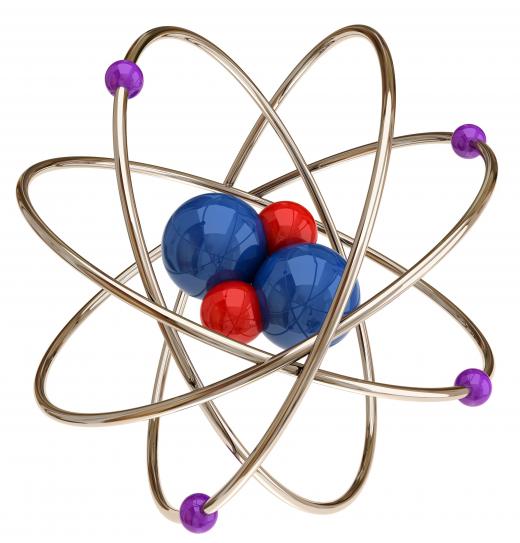What are Covalent Bonds?
 Michael Anissimov
Michael Anissimov
Covalent bonds are the strongest type of chemical bond and are created between atoms with similar electronegativity. In general, electronegativity increases toward the right of the periodic table and decreases down the table. Electronegativity is not an atomic property, but emerges when atoms interact with each other.
According to modern atomic theory, atoms have electrons circling them in shells called orbitals. Each orbital has a maximum number of electrons, and each atom "wants" to max out its electrons in each orbital. Noble gases are the most stable elements because their electron orbitals all carry the maximum number of electrons. They are incapable of forming covalent bonds.

When two or more atoms have similar electronegativity, conditions are ripe for covalent bonding. The electron orbitals of both atoms are seeking a similar number of other electrons to max out their electron shells. When the atoms are brought together, their electron shells intermingle, and create something called "molecular orbitals," where electrons wander freely between both atoms and orbit the nuclei of both. This makes covalently bonded materials, such as diamond and many metals, quite conductive. In contrast, ionic bonds, such as the type of bonds that hold together sodium chloride (salt), electrons keep to their respective atoms, and the overall molecular structure is weaker as a result.

Covalent bonds are not common within the processes of life because it takes too much energy to break them apart, making them too hard to work with. Depending on the number of shared electron pairs, the bond is characterized as single, double, triple, and so on. Some of the metals with the highest melting points, molybdenum and rhenium, have quadruple bonds. Quintuple and sextuple bonds are quite rare, and there is good reason to believe that nothing on the periodic table can go beyond a sextuple bond.
As stated before, covalent is the strongest possible type of chemical bond. Other chemical bonds include ionic bonds, hydrogen bonds, and the van der Waals force. There are many other types of rare and exotic bonds, but these four are by far the most common.
AS FEATURED ON:
AS FEATURED ON:












Discussion Comments
We have heavy elements in monatomic form in us but in very tiny quantities (in the trillionths). However their function in the body are only just becoming realized.
covalent bonds are groups of atoms that have a 'stable' mass electron orbit. what is interesting is that at the bottom of the PT where covalent bonds are least seen, polarised magnetic grouping occurs. In monatomic state those 'elements' exhibit classic Cooper pair behavior
with elongated nuclei. The atoms more suitable to covalent bonding are rarely seen monatomically.
I would disagree with one thing. Ionic bonds are stronger than covalent bonds. this is seen if you compare sugar and salt for example. Salt has a very high melting point and its ionic. Sugar in the other hand is covalent and has a low melting point.
@ Anon5621- I would have to disagree with you. Both covalent and ionic bonds are important in the processes of life. Covalent bonds are necessary for things like DNA, cellular storage of glucose, etc.
Ionic bonds are necessary because of their ability to form solution with water, freeing up some of their ions to form other ionic compounds important to life. For example, if drug, food, or nerve receptor reactions were the result of the formation of covalent bonds, then they would be irreversible and permanent, causing serious problems to the complex processes that allow life to exist. Life is more than the physical properties of cells; it is about chemical reactions that take place over and over again.
In a sense, you are both right, and you are both wrong. Both types of chemical bonding play an important role in biochemistry.
Covalent bonds are the only bonds within processes of life. ionic bonds break apart in water, so your body would dissolve if it weren't made of covalent bonds.
Post your comments